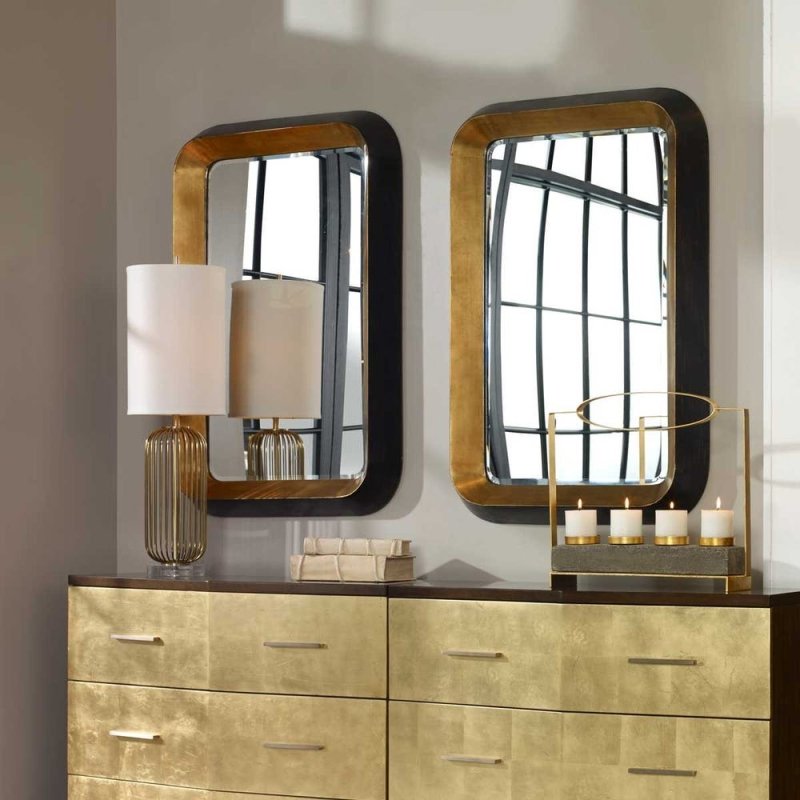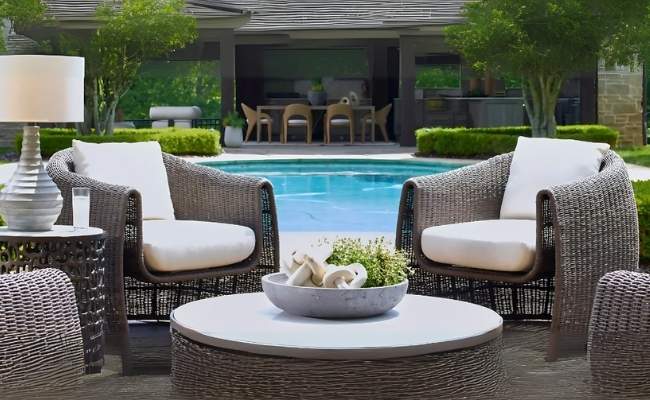
10 Modern Wall Mirrors That Open Up Small Rooms
Every compact room has a hidden superpower waiting to be unlocked: reflection. Modern Mirrors can widen a hallway, lift a low ceiling, or transform a dim nook into a luminous focal point—all without moving a single wall. When you choose the right Wall Mirror, you’re not just hanging décor; you’re reshaping sightlines, harnessing daylight, and introducing sculptural form that guides the eye through space. In small interiors especially, a mirror acts like a visual doorway—borrowing views, bouncing light, and creating depth where there wasn’t any before.
This guide goes beyond quick tips. Below you’ll find ten richly detailed mirror styles—with placement strategies, styling formulas, and product picks—to help you open up small rooms with intention. Whether you’re drawn to graceful arched mirrors, a warm wood framed mirror, or glimmering gold oval mirrors, you’ll learn how proportion, finish, and reflection interplay to make your space feel airier, brighter, and beautifully complete.
Key Takeaways
- Go larger than you think. Bigger mirrors expand sightlines and make tight rooms feel intentional instead of cramped.
- Aim mirrors at light and beauty. Reflect windows, lamps, or artwork—never clutter. Opposite a window is prime.
- Frame = mood. Gold frames warm neutrals, black frames add crisp structure, natural wood lends calm texture.
- Shape changes perception. Round and arches soften hard angles; rectangles and panels mimic windows; organic shapes add movement.
- Height tricks the eye. Taller mirrors lift ceilings; wide mirrors visually stretch short walls.
The 10 Mirror Styles That Visually Grow Small Rooms
1) Oversized Round Statement: Airy Curves That Calm and Expand
Round mirrors are soft-power specialists. Their continuous curve diffuses boxy room geometry, making tight spaces feel less rigid and more serene. Go generously sized—at least half the width of the furniture beneath—to achieve the “window effect.” The visual payoff is immediate: more light bounce, fuller vistas, calmer energy.
Try the Junius Large Gold Round Mirror to anchor an entry or dining wall. The slim, lightly antiqued frame reads as jewelry rather than bulk, while the expansive glass amplifies daylight and chandelier glow alike. Styling tip: pair with a low, clean-lined console so the circle “floats,” then add a single tall branch to echo the mirror’s arc.
- Best placements: above consoles, over mantels, end walls of narrow rooms.
- Combos: linen + oak + gold = quiet luxury; black accents for contrast.
2) Minimalist Gold Frame: Slim Shine, Max Light (Small-Space MVP)
When square footage is precious, a thin metal frame delivers elegance without visual weight. Minimalist gold reads warm but restrained, blending with linen, boucle, and light wood finishes that dominate modern small-space design. The clean outline increases perceived order (and order reads as spacious).
Mount the Lytton Gold Mirror vertically in hallways to elongate the path or horizontally above a compact sofa to widen the wall. The beveled edge adds sparkle at night when table lamps glow—an easy trick to “double” ambient light. For renters, centered eye-level hanging keeps sightlines calm; for homeowners, consider a pair flanking a window to simulate architectural symmetry.
- Best placements: narrow corridors, over credenzas, bedroom dressers.
- Pro move: echo the frame in cabinet pulls or picture frames for a cohesive field of gold.
3) Arched Mirrors for Softer Angles: Lift the Ceiling Line, Add Grace
An arch is a posture cue—it gently lifts the eye, which makes ceilings feel higher and rooms lighter. In small spaces with standard heights, the right arch reads like a graceful architectural upgrade. The key is restraint: let the curve sing while the frame stays slim and structural.
The Grand Black Iron Arched Mirror delivers cathedral-inspired height and presence in a lean matte-black outline. Lean it (secured) behind a loveseat, or mount at the end of a corridor to “pull” the hallway forward. The curve softens hard furniture edges and brings balance to rectangular art or shelving nearby.
- Best placements: behind sofas, dining buffets, or on the wall opposite your primary window.
- Palette pairing: black + ivory + oak for modern calm; add brass for warmth.
4) Mirrors with Gallery Wall Styling: Modular Light Spread
One large mirror isn’t the only path to openness. A grid or stripe of panels increases reflective surface area and adds rhythm. Frameless panels are especially potent in small rooms because there’s no heavy outline—the wall simply becomes reflection.
Use the Elegant Frameless Beveled Panels to build a window-like installation. A 2x2 grid behind a table creates “virtual panes,” brightening dinners and doubling candlelight. In hallways, a linear run guides the eye forward, reducing tunnel feel. Keep spacing precise (½–1" between panels) so the composition reads architectural, not busy.
- Best placements: dining nooks, narrow halls, stair landings.
- Tip: align panel edges with door heads or window sills for a built-in look.
5) Floor-Length Leaning Mirrors: Vertical Volume & Dressing-Room Glow
Full-height reflection is transformative: it adds visual “volume” from floor to ceiling and projects light across the room. A leaning mirror also tilts slightly upward, catching ceiling brightness and bouncing it deeper into the space. Just remember safety straps for a secure lean.
The Stately Gold Edmon Floor Mirror pairs an antiqued gold wood frame with a generous bevel—elegant but not flashy. In a snug bedroom, place it opposite a window or adjacent to a bedside lamp to magnify glow and make morning routines luxurious. In living rooms, a leaning floor mirror behind an accent chair creates an intimate reading corner that still feels open.
- Best placements: bedrooms, corners that need “life,” entry niches.
- Tip: layer a low basket or stool in front to turn a mirror into a vignette.
6) Organic & Sculptural Shapes: Functional Art That Adds Movement
Asymmetrical mirrors act like kinetic sculptures. Their irregular silhouettes introduce rhythm, soften rectilinear furniture plans, and spark conversation—all while performing the same light-bouncing work as classic shapes. They’re ideal when you want a focal point that doesn’t add bulk.
Arrange the Linneah Geometric Modern Mirrors (Set of 4) as a clustered “constellation.” Mount them so edges nearly kiss, or float them apart to stretch a narrow wall. The petite aged-gold frames warm cool palettes and bridge metals (black hardware + brass lighting) with ease. Pro move: angle one panel to capture a pendant or sconce—multiple small reflections feel like twinkling light across the wall.
- Best placements: above consoles, over low headboards, awkward short walls.
- Tip: sketch your layout with painter’s tape before drilling to perfect flow.
7) Natural Wood Framed Mirror: Texture, Warmth, and Calm
When a room feels cold or cramped, add tactile warmth. A wood framed mirror introduces organic grain and gentle color variation—visual cues that read as restful and grounded. Light finishes (whitewash, oak) keep the footprint airy; deeper stains add cozy contrast if your palette is pale.
The Rustic Farmhouse Mirror evokes barn-door charm with crossed inlays and a whitewashed frame that won’t darken a wall. Hang horizontally to mimic a large interior window, widening short rooms; hang vertically to elongate sightlines in an entry. Style with woven baskets, alabaster lamps, and linen runners for a cohesive, breathable vignette.
- Best placements: dining nooks, cottage entries, living rooms with neutral textiles.
- Tip: repeat wood tones (frame & furniture) within two shades for harmony.
8) Black Metal Frame: Crisp Contrast, Architectural Clarity
Matte black frames outline space with graphic precision. In pale rooms they add necessary structure; in moody rooms they echo hardware and lighting for a tailored, gallery vibe. Choose openwork designs to keep things visually light while adding texture.
The Mosaic Metal Round Mirror surrounds clear glass with a lace-like black metal pattern. The negative space lets wall color peek through, preventing heaviness while delivering drama. Place across from a feature light so the bevel and metal facets catch highlights at night—instant depth and glow for compact living areas.
- Best placements: above media consoles, end walls of hallways, modern breakfast nooks.
- Tip: triangulate: mirror + black sconce + black pull for cohesive repetition.
9) Positioned Directly Across Windows: Daylight Multiplier
The simplest masterstroke: place a mirror directly opposite a window to duplicate light, sky, trees, and views. This classic approach brightens deeply and can reduce daytime reliance on artificial lighting (learn more about daylighting).
Use the industrial-leaning Pali Industrial Dressing Mirror across from your brightest opening. In tiny bedrooms, you’ll feel the wall “fall back” as the view appears again in reflection; in living rooms, the doubled scene calms visual noise and increases perceived width. Keep the opposite window free of blinds during the day, and angle a floor lamp nearby for evening sparkle.
- Best placements: directly opposite windows, or 10–20° off axis to avoid glare.
- Tip: make sure it reflects beauty—greenery, art, architecture—not clutter.
10) Sculptural Multi-Piece Sets: Create Flow and “Virtual Windows”
Multiple mirrors guide the eye, balancing walls and adding cadence to long, narrow rooms. A trio of tall rectangles hung side-by-side acts like a triple casement—more panes, more perceived openness, more light.
The Rowling Gold Mirrors (Set of 3) is endlessly flexible: line them up for a window effect in a dining alcove, stagger them up a stair for motion, or separate across a studio to echo finishes room-wide. The slim gold frames refine without crowding; the height visually stretches low ceilings. Keep spacing consistent (2–3" apart) and center the group at eye level for a composed, custom look.
- Best placements: dining walls, long corridors, behind sofas.
- Tip: if your wall is short, hang two and use the third on a perpendicular wall to “turn the corner.”
How to Size, Place, and Style for Maximum Space Gain
| Goal | What to Choose | Placement Tip |
|---|---|---|
| Make ceilings feel higher | Tall arch or floor-length mirror | Center ~57–62" to midpoint; let the top clear door height |
| Widen a short wall | Wide rectangle or multi-panel grid | Hang horizontally above sofa/console with 4–8" gap |
| Brighten a dim room | Large mirror opposite or near a window | Angle toward light; add a lamp to the reflection at night |
| Soften hard angles | Round or arch | Pair with a single tall organic branch for echo |
| Add warmth & texture | Wood framed mirror | Repeat the wood tone within 1–2 shades elsewhere |
Pro tip: In very small rooms, keep nearby décor simple so the mirror reflects clean lines and calm color fields—visual “quiet” reads as spacious.
Conclusion: Reflect More, Live Larger
Small rooms don’t need to fight their size—they need smart optics. With the right Modern Mirrors, you’re not just adding shine; you’re redrawing the room’s boundaries. A grand round mirror centers the space and spreads glow; an arched mirror lifts the ceiling line; a wood framed mirror grounds the palette with warmth; a trio of gold frames becomes a “virtual window.” Aim your Wall Mirror at light and beauty, size up with confidence, and keep frames slim where you want less visual weight. The result is a home that feels brighter, wider, calmer—and unmistakably you.
Ready to see the difference? Explore our curated collection and find the mirror that transforms your space today: Shop Modern Mirrors.
FAQ
How do I choose the right size mirror for a small room?
As a rule, go larger than you think: at least half the width of the furniture beneath (so a 60" console likes a ≥30" wide mirror). In tight rooms, a bigger mirror reduces visual clutter by consolidating reflection into one clean “window.”
Where should I place a mirror to make the biggest impact?
Opposite a window for daytime brightness and view “duplication,” or opposite/near a lamp for nighttime glow. Keep reflections intentional—greenery, art, architecture—not clutter.
Are arched mirrors just a trend?
They’re classic. The curve softens rigid layouts and lifts sightlines, which is perfect for small rooms. Choose slim frames for longevity; the Grand Black Iron Arched Mirror is a timeless example.
What frame finish works best in compact spaces?
It depends on mood: gold warms neutrals, black adds crisp structure, and wood brings natural calm. For the least visual weight, consider frameless panels or ultra-slim trims.
Can mirrors help with daylight and energy?
Yes. Mirrors amplify daylight by bouncing it deeper into rooms. Learn more about daylighting and smart natural-light strategies at Energy.gov.
How high should I hang a wall mirror?
Center the mirror around 57–62" from the floor (average eye level). When placing above furniture, leave 4–8" of breathing room between the top of the piece and the bottom of the mirror.
Any styling tricks to avoid “fun-house” vibes?
Use fewer, larger mirrors rather than many small ones; keep frames cohesive in finish; and ensure mirrors face order and light, not busy storage zones.















Leave a comment
This site is protected by hCaptcha and the hCaptcha Privacy Policy and Terms of Service apply.